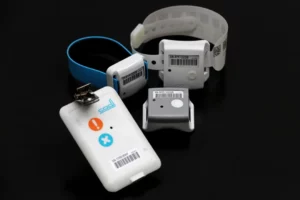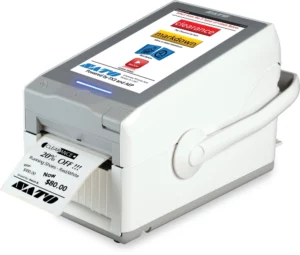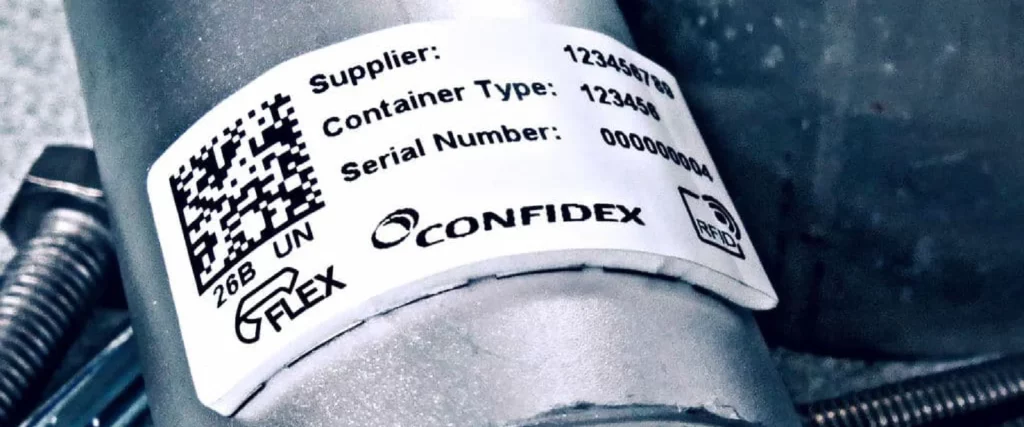Radio Frequency Identification (RFID) has become widely employed in the industrial sector in recent years. This technology is used for effective logistics organization and speedy inventorying. Companies adopting this technology have claimed higher productivity and lower costs, and the outcomes have been phenomenal. From that point on, RFID has been in the limelight. After being there for so long, it gained notoriety for its advanced features.
What is RFID?
With its first prototypes going back to 1973, when engineer Mario Cardullo obtained his first patent for a device that could produce a coded signal in response to distant radio frequencies, RFID is a well-established technology. It is still in use today as a strong identifying tool across many different sectors. It can track pharmaceuticals used in hospitals, permit authorized staff access to restricted areas, and offer crucial assistance with inventory and supply chain management.
You’ve probably used this technology in your daily life, whether you were using your tap-to-pay chip to breeze through the checkout line, passing through scanners when leaving a clothing store, or scanning your fare pass to get to work.
RFID is an automated data collecting system that identifies, classifies, and tracks items by using radio frequency waves to transmit data between a reader and a moving object. It does not need a direct line of sight or close proximity between both the reader and tags, in contrast to traditional barcodes.
Components of an RFID System
Four main elements make up RFID technology: RFID tags, RFID receivers or readers, RFID printers or encoders, and computer software.
RFID Tags
RFID tags are compact hardware with an antenna and an electrical microchip embedded within. The RFID tag’s distinctive identifying number is stored on the microchip. Radio frequency is used by RFID tags, a sort of tracking technology, to locate, recognize, follow, and interact with objects and people.
RFID tags may contain a variety of data, including serial numbers, a brief product description, and even entire pages of content. Cryptographic security elements are included in certain RFID tags to provide a high degree of authentication and validation. Low frequency (LF), high frequency (HF), and ultra high frequency (UHF) radio waves are typically used to identify RFID tags.
The item that has to be tracked has tags linked to it. These tags provide all the relevant data that has been decided upon before installation. One may translate and collect the information from these tags via RFID readers.
We will be discussing RFID tags in more detail below.
RFID Readers
An RFID reader is a handheld or permanently mounted device that reads tags. With the propagation of radio wave impulses, tags are turned on. The signals from the tags are transmitted back to the antenna after they have been triggered. The antenna then converts the waves into data that the RFID readers pick up.
As mentioned above, RFID readers can be classified into 2 categories, handheld (portable) and stationary (fixed). What’s the difference? In essence, portable readers are movable and fixed readers are immobile. While portable readers have built-in antennae, fixed readers need an antenna to gather data.
Handheld RFID Readers
Handheld or portable RFID readers can be carried around on your person. When reading tags on the move or in other situations where motion of the reader is required, handheld RFID readers are a perfect choice. With a few exclusions, handheld readers contain built-in antennae and displays for simple operation and fast data engagement. In addition to being useful for tag writing, handhelds are frequently used for inventory monitoring.
Fixed RFID Readers
Large numbers of RFID-tagged containers, pallets, and objects may be moved and tracked swiftly and precisely using fixed RFID readers. Fixed RFID readers are made to function well in a variety of settings. They are perfect for usage on radio-frequency-challenging substrates, in high-density tag situations, and in elevated throughput operations.
In order to be fastened to ceilings, walls, entrances, carts, etc., fixed readers feature ports for antennae. Since fixed readers are typically stationary, they should be positioned in a central area. Fixed readers are able to recognize entities as they pass through a certain space, like a loading dock.
RFID Printers
RFID printers are machines that print and code data on RFID inserts or tags at the same time. The only method to print on labels is with one of these machines, and they also reduce effort by automating the labor-intensive process of manually encoding individual tags. In addition to printing data that can be read by humans, RFID printers can also print pictures and barcodes.
RFID Printers can be useful even for non-printing applications by speeding up the encoding process. Industrial printers, for instance, have the capacity to print at speeds of up to 14 inches each second in some applications, or just above 6 tags a second for 2-inch tags.
Variations of RFID printers may be broken down and distinguished in a variety of approaches. The use of a printer is the most typical. There are three primary groups under “printer usage”: industrial, desktop, and mobile. RFID printers can also be grouped according to how well they work with RFID tags, often by tag frequency but occasionally by specific tag variants.
Computer Software
RFID software is employed to handle data gotten from and transmitted to RFID readers, tags, and printers. There are several varieties of RFID software. RFID tags, which are small transponders that connect to RFID antennas, are created using some RFID applications. Others are made to print RFID labels with barcodes or text that can be read by humans. RFID software for portable devices like readers, encoders, and scanners may be incorporated in the gadget itself or kept on a network server. Device administration functions like distant surveillance and hardware setup are included in conventional RFID middleware.
In order to work with enterprise resource planning (ERP), supply chain management, or warehouse management systems, several RFID software programs offer system interfaces.
RFID Tags
To build on what has previously been mentioned about RFID tags, they are of two types — passive and active.
Active RFID Tags
Active RFID tags have a few distinctive qualities that set them apart from passive tags. Some tags are enclosed in a protective shell because they frequently need to survive in challenging environmental circumstances like freezing temperatures or heavy rainfall. Active RFID tags are bigger than passive RFID tags due to the size constraints of the battery, wiring, and robust exterior.
Some additionally feature sensors on-board that monitor environmental factors including temperature, dampness, fluid flow, and power usage. They may also be applied to very particular use cases, such as detecting temperature changes when a cargo door is opened. As a result, shippers have more information to help them make critical decisions, including rerouting a package if it spoils.
Active RFID tags may transmit up to and even past a distance of 100 meters and just need a weak signal to interact. Based on the characteristics, each tag might cost anything between $15 to over $300. Active RFID tags are typically too costly for straightforward inventory applications due to their high cost. They are more effective in tracking valuable shipments. Along with logistics and transportation, active RFID tags are frequently used in the car production industry, healthcare and medicine, constructions, mining, telemonitoring, and IT asset management sectors.
Passive RFID Tags
There is no inbuilt source of power in passive RFID tags. They make use of the electromagnetic waves emitted by readers. An internal antenna of the gadget produces a magnetic field after a reader communicates to the tag. The tag circuit transmits data to the reader again using the power produced.
The serviceable life of passive RFID tags is greater than that of active RFID equipment. They are small and relatively easy to produce. Ultra-high frequency (UHF) tags have the greatest range of any passive RFID invention.
Passive RFID tags are currently the most popular; they don’t really necessitate a direct line of sight to a reader but have a significantly lower bandwidth, are more compact, and are perfect for:
- Inventory management and control
- Healthcare and pharmaceutical
- Supply chain management
- Tracking of assets and personnel
- Supervision of the perimeter and gates
- Logistics
- Clothing and retail
- Manufacturing and industrial
- Anti-counterfeiting and brand safeguarding
- Traveling and entertainment
- Real-time location systems (RTLS)
Makamat’s RFID Tags
We offer a wide selection of RFID products, ranging from readers and tags to printers and encoders. Our RFID solutions cater for asset tracking, supply chain management, industrial safety, retail, healthcare, and food safety needs. This section will discuss our RFID tags.
Active RFID Tags
Description
Wavetrend’s Industrial Asset Tag is an Active RFID Tag that is suitable for tracking and monitoring high-value assets such as plants or vehicles. The IP67-rated glass-filled nylon casing is well-suited to harsh environments that demand a very durable, waterproof Tag. To satisfy specific application needs, a variety of sensor alternatives are available.
Some benefits
- Suitable for tough environments requiring a robust waterproof tag
- Real-time identification of unique tags in a large population
- Flexible configuration of status updates, together with battery life optimization
- Lifespan of 3 years when transmitting at the standard or greater interval
Check out our active RFID tags here.
Passive RFID Tags
There are many types of passive UHF tags that you can choose from based on your requirements. Our passive RFID tags are divided into different families, each catering to a specific need as will be described below.
Confidex Steelwave – Durable on-metal tags for indoor and outdoor applications.
Steelwave has a wide range of items for both indoor and outdoor use. This innovative and long-lasting product line provides numerous attachment methods, small footprints, flexibility, and performance to guarantee the successful deployment of asset monitoring projects with a wide range of needs. These include the Steelwave Classic, Steelwave Flex, Steelwave Micro II, and Steelwave HF.
Confidex Ironside – Most rugged hard tags for industrial environments.
The Ironside collection is designed for metallic returnable transport products and industrial assets that are subjected to harsh weather and handling. A patent-protected antenna design with industry-leading performance and a very durable IP68 (up to IP69K with Ironside Flag) construction provides seamless asset tracking in the harshest situations. The products are Ironside Classic, Ironside Micro, Ironside Slim, Ironside Flag, and Ironside Plate.
Confidex Silverline – Industrial grade printable on-metal labels.
The Silverline collection is the premier IP68-rated on-metal label solution for demanding applications. The Confidex Silverline collection enables RFID usage easier and more efficiently than ever before by combining the on-metal functionality of hard tags with the ease of customizing of labels. The products are Silverline Blade II, Silverline Classic II, Silverline Micro II, and Silverline Slim II.
Confidex Heatwave – High temperature tags with industrial grade reliability
Designed with extreme reliability as the prime focus. The Heatwave series is the result of over 10 years of research and development of high temperature tags with proven dependability in industrial applications such as automotive paint shops. The products are Heatwave Flag and Heatwave Tough.
Confidex Go – Cost engineered for fast and reliable identification in high volumes
Confidex Go products are designed with cost efficiency in mind. They are the go-to choice for fast and reliable logistics applications that require unique features such as reading from all angles, eco-friendly paper based structure, VDA compliancy or tagging challenging specialty retail categories such as sports equipment, beauty and personal care items. The products are Crosswave Classic Neo, Casey, Leaf, eKanban GTL/SLC, Ferrowave Classic, Ferrowave Flag, Ferrowave Micro, and LoopTag.
Confidex Carrier – Washable tags for plastic returnable items
The Confidex Carrier family is designed especially for plastic returnable transit item (RTI) tracking. They are all IP68 classified and can withstand washing processes while maintaining their strong grip on plastic surfaces. All labels can be printed and encoded with standard RFID printers or be ordered pre-personalized. The products are Carrier Classic, Carrier PRO, Carrier Tough Slim, and Carrier HF.
Confidex Cruiser – Reliable vehicle identification for parking, vehicle registration and toll collection
The Confidex Cruiser family is designed for Automatic Vehicle Identification (AVI) and Electronic Vehicle Registration (EVR) applications. Cruiser labels can withstand varying weather conditions and washing processes while remaining tamper-proof. Confidex also delivers fully personalized Cruiser products against customer requirements. The products are Cruiser Headlamp, Cruiser Windshield, and Cruiser Windshield Crypto.
Confidex DesignStudio
Confidex DesignStudio provides you with uniquely new products or standard product modifications for your specific needs, whether simple or complex. Let’s co-create together a BLE, RFID, or NFC product that fits your needs. These products are TireTag, Survivor, Captura, PulpLabel, and ESD On Metal.
For a complete overview of all our Passive RFID Tags, click here.
We also offer BLE Tags, battery-assisted passive tags, and metal-adhesive tags.
Final Thoughts
According to popular consensus, the development of radio frequency identification technology began during World War II. Radar, which was developed in 1935 by Scottish physicist Sir Robert Alexander Watson-Watt, was used by the Germans, Japanese, Americans, and British to warn of oncoming planes when they were still hundreds of miles away. The issue was that it was impossible to distinguish between planes flown by national pilots returning from missions and those belonging to the enemy.
Inventors saw a huge potential for radar and radio frequency identification after developments in that age, and thus began working towards developing technologies that accommodate for the people’s evolving needs. Thus, RFID was born and has since grown to become one of the world’s most beloved tracking technologies.
RFID has a lot of potential past asset tracking and use in supply chain and manufacturing, such as in general security and in the entertainment industry. Keep an eye out for upcoming articles we plan on publishing about these two RFID ventures!


